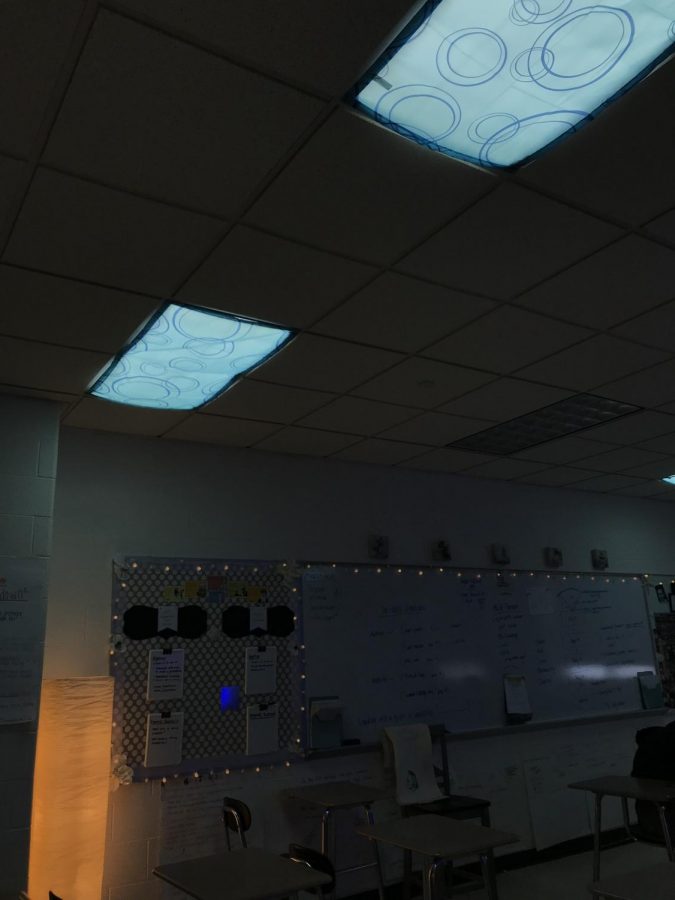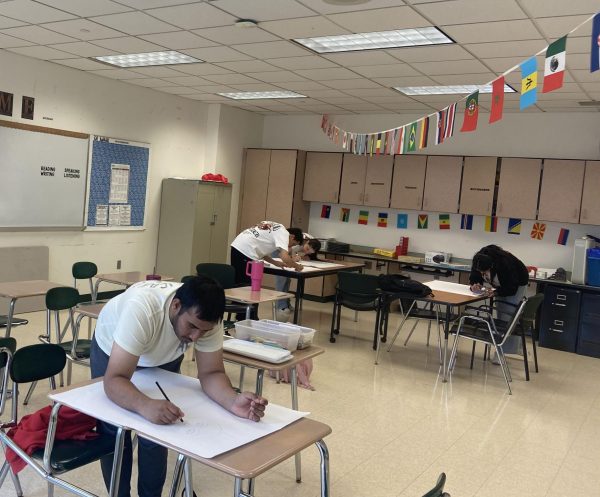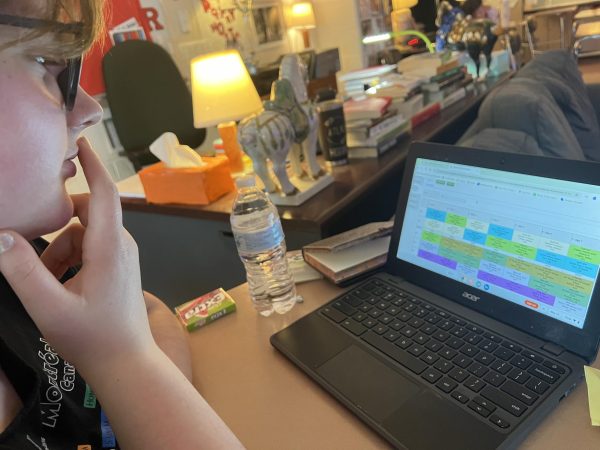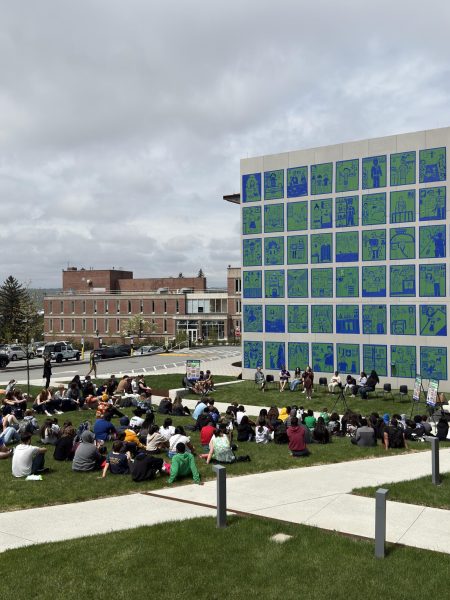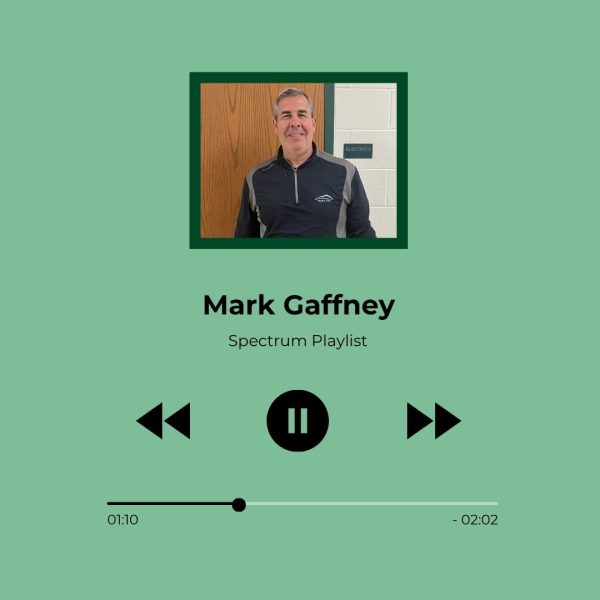Bright lights are not always the brightest idea
Blue light covers help to subdue the glare of fluorescent lights in some classrooms.
Gigantic and bright fluorescent lights are found throughout the classrooms, hallways, bathrooms, cafeteria, gym, library, offices, and practically every room at Dartmouth High School. Occasionally, students, faculty, and staff members are affected by the light transmitted by the fluorescent lights on a daily basis. Are these overly bright lights affecting student learning, attitude, and work ethic?
At DHS there has been an increase in teachers ditching the traditional fluorescent lights and replacing them with lamps, Christmas lights, or another variation of soft lighting. English teacher Jessica Lassey is one of the many to make the change to a light alternative. Ms. Lassey said, “The hard sterile fluorescent lights remind me of a hospital, and who wants to sit in a hospital for 62 minutes?”
Inside Ms. Lassey’s room, teal blue transparent covers shelter the severe ceiling lights, white string lights stretch across the front and back board, and an overall calm feeling is present inside the classroom.
Do these light alternatives help students academically? “I think having a room where students want to come into helps to create a better attitude to learn, compared to the harsh fluorescent lights,” said Ms. Lassey.
Other students and teachers believe in the benefits of using light alternatives. History teacher Laurie Charito said, “Having lamps creates a more comfortable environment for learners which results in them to do better in class. The fluorescent lights are too strong and give a lot of learners headaches.”
English teacher Will Higgins has been using lamps instead of the traditional overhead lights for a while now. “If you’re more comfortable than you perform better. I perform better with these kind of lights, so I assume others do too,” he said.
Sophomore Kayla Pires said, “For people who are light sensitive and get headaches, it makes focusing better if the lamps are used instead.”
What are the dangers of these overly bright lights to students? Fluorescent lights are gas filled tubes that contain mercury vapor and electricity. This mercury vapor is excited by electric currents that are passed through by electric ballasts. Ballasts limit the current and voltage that pass through the fluorescent lights by sending pulses of electricity. The ballasts are needed for control of the electric currents and high voltage spike. The issue with ballasts sending high pulses of electricity is that they flicker. According to the American Migraine Foundation, flickering bulbs are known to cause migraines, eye strain, stress, and anxiety which can deeply affect students learning in the classroom. As Sophomore Abby Simmons said, “Personally, lights give me headaches and sometimes they flicker. When they are off or replaced I feel more relaxed.”
The shifting from fluorescent lights to LED has become rather popular over the last few years in schools, hospitals, and other facilities. Not only are LED lights known to improve concentration and positively impact students learning ability, but according to the U.S Department of Energy they use less energy than fluorescent lights which results in decreased energy bills. Upfront fluorescent lights are less costly than LEDs, but the cost of maintenance dramatically differs. Fluorescent lights typically have a lifespan of 7,000 to 15,000 hours, while LEDs have a lifespan of 50,000 hours. LEDs are significantly better quality than fluorescents, which means replacements are less frequent and cost is cheaper over a period of time.
Tunable LED lights are becoming common in classrooms throughout the United States. According to the U.S Department of Energy, tunable lights are designed to mimic the sun’s natural light, which can be incredibly helpful towards students performances in class. With tunable LED lights a teacher can match the learning environment in the classroom for the certain work being done. For example, if students in a classroom are doing interactive work, a warmer light is more helpful. In a focused environment, such as taking a test, a cooler temperature is more beneficial.
Students who experience headaches, concentration issues, and overall difficulties due to the fluorescent lights would greatly benefit from LED lights in classrooms. Whenever possible, teachers should provide options to the students in relation to the learning that is taking place. Perhaps schools should invest in providing classroom teachers with light alternatives as research indicates that students perform better with options of different lighting in the classroom. “For now I think it’s better for individual teachers to personalize their room,” said History Teacher Laurie Charito.

